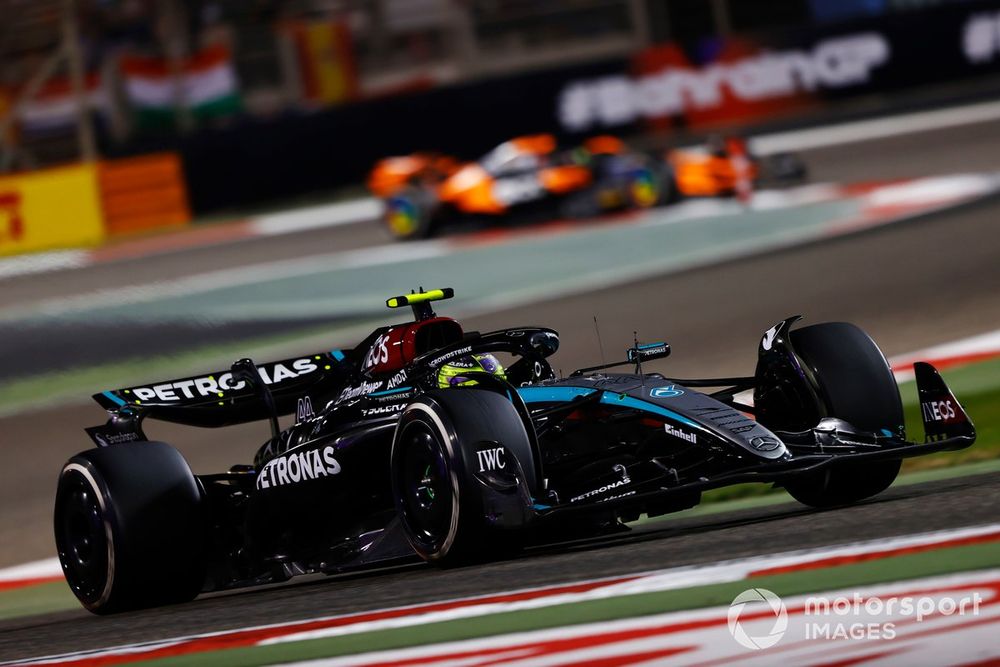George Russell led the Silver Arrows charge with fifth place in Bahrain as team-mate Lewis Hamilton finished the season-opener in seventh, the pair having started third and ninth respectively.
Russell had climbed as high as second with an outside pass on Charles Leclerc on lap four to sit just 1.7s behind eventual dominant Red Bull winner Max Verstappen.
But his impressive start was undone by having to switch focus to nursing a power unit issue caused by a cooling miscalculation, which required lifting-and-coasting measures to combat rising temperatures. Hamilton was also hurt, further afflicted by a cracked seat.
The engine gremlins also disrupted power unit customer team Williams. Both Alex Albon and Logan Sargeant suffered, with the latter additionally coming to a stop with a temporary steering wheel electronics fault.
Asked by Motorsport.com to explain the reliability woes, Mercedes motorsport boss Wolff explained: “[Pre-season] testing was pretty good. Also, the performances on Thursday and on Friday were encouraging. The car was stable, was good. The drivers like it.
“When we started the race on the soft tyre, everything pretty much [was] to plan. And then, unfortunately, we had to start cooling the engine more than we expected. We can’t understand yet where that came from.
“We have one of our customer teams, Williams, who had the same issue. The other two [McLaren and Aston Martin] not. That was unexpected.”
Lewis Hamilton, Mercedes F1 W15
Photo by: Andy Hone / Motorsport Images
Wolff reckoned that the performance drop-off, thought to be a result of both engine overheating and a battery issue, and the preventative measures combined for a lap time loss of more than half a second per lap.
Russell finished 22s behind podium finisher Carlos Sainz and 47s behind Verstappen after the 57 laps.
The Austrian continued: “From then on, if you switch 0.3-4s of power unit performance off, then you have to lift-and-coast on top, so I think at times probably altogether it was 5 or 6 tenths of a second that we couldn’t take from what the car had in it.
“Therefore, it just wasn’t great fun… At times, we were literally not a few degrees, but like 10 degrees running over what we thought we should be.”
Wolff, who reckoned the problems would be fixed in time for the Saudi Arabian GP this weekend, said the temperature spikes came independently of Russell and Hamilton running in the dirty air of traffic.
“I think, even without…
Click Here to Read the Full Original Article at Motorsport.com – Formula 1 – Stories…

